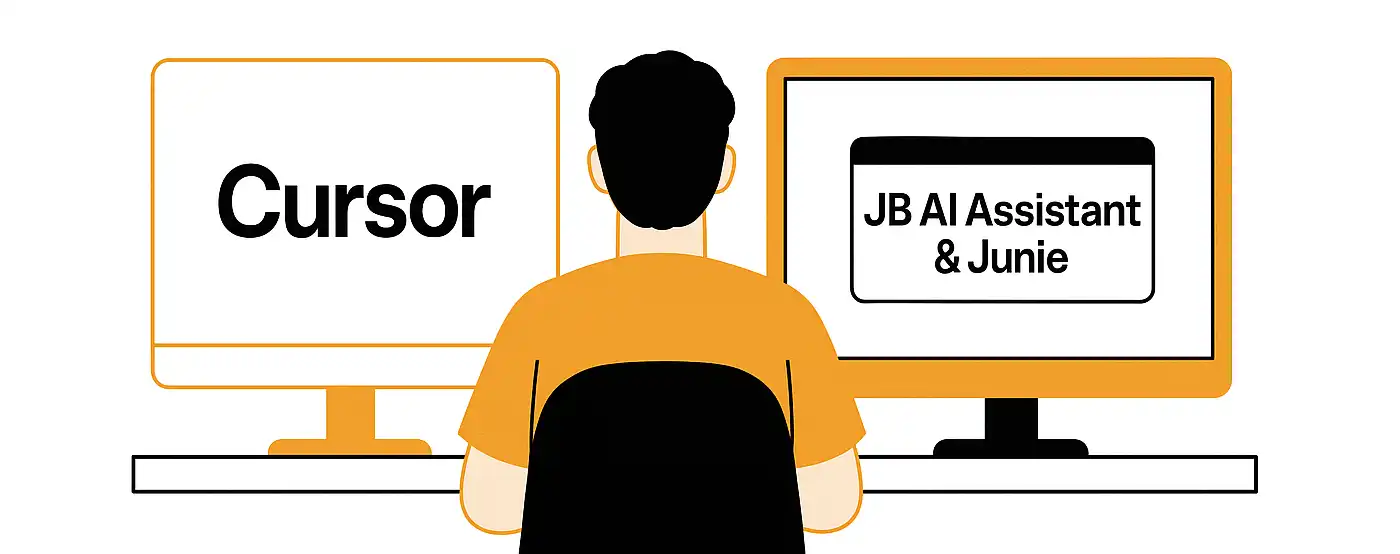JetBrains Junie & AI Assistant vs Cursor for Frontend Developers – Which AI Agent Comes Out on Top?

Background
Today I reactivated my JetBrains (JB) subscription so I could take Junie and the AI Assistant for a test‑drive. Since February I have been working mostly in Cursor, especially on frontend code (React, React Query, MUI). I switched due to a rise of frontend AI tools and AI editors which are major web dev tools now. I wanted to check whether it is worth coming back to JB and see what has changed—features such as project‑wide Local History, stronger 3‑way merge or good refactor capabilities have always been placing Jebtrains on top of other IDEs for me.
The Task
The feature I had to implement to test those was simple but multifile: in an application that lists projects I needed to add an option for creating a new project, but with a type selection shown in a modal. I prepared the implementation without MCP servers.
JetBrains Junie & AI Assistant
Pros
- Junie produced a solid first draft. With the same specification and by adding the relevant files to the context it generated a clean, sensible solution—better than Cursor on the first attempt.
- Strong “core” IDE features. JB still offers project‑level Local History, much better conflict merging, refactoring and the other things that make it a good IDE.
- Extra AI Assistant tricks. Some functions, for example AI‑powered rename, are not available in Cursor.
Cons
- Noticeably slower autocomplete. AI Assistant completion felt slower than in Cursor and at times failed to appear at all.
- Slower refinement loop. The pace of applying feedback or refactoring was lower and the AI Assistant did not always hit the mark.
- Limited AI customisation. There is no way to split rules/context into smaller files; Junie works with a single, general file.
Cursor
Pros
- Agent mode with Sonnet 3.7 matched Junie. For this feature implementation it performed very similarly.
- Greater flexibility. Cursor lets you split files or AI rules into smaller pieces, define your own modes, and even perform web‑based editing; the AI Assistant currently offers only web based chat (edit is in Beta and it is offline).
- Additional modes. Things like documentation indexing are available.
- Editable plan mode. You can tweak the execution plan while coding, giving you tighter control.
- Faster context management. Adding files to the context is much quicker; in AI Assistant you have to use the “+” button every time.
I am not discussing history or checkpoints—both tools handle those well enough IMHO.
Summary: AI tools for frontend development
For now Cursor still comes out on top for me—mainly because of its speed, customisation options and overall flexibility when it comes to AI assistance. JetBrains has made real progress since February and Junie can deliver pleasant surprises, but it still needs a bit more polish before it can fully compete with Cursor. What is your opinion on that?
